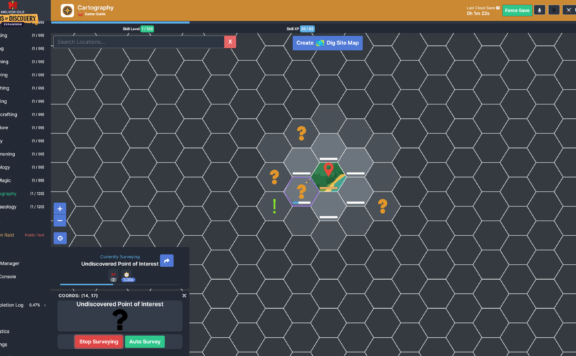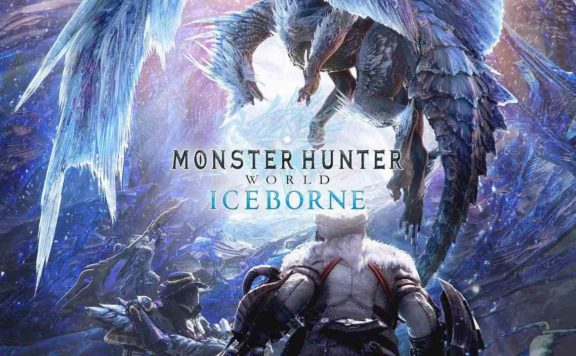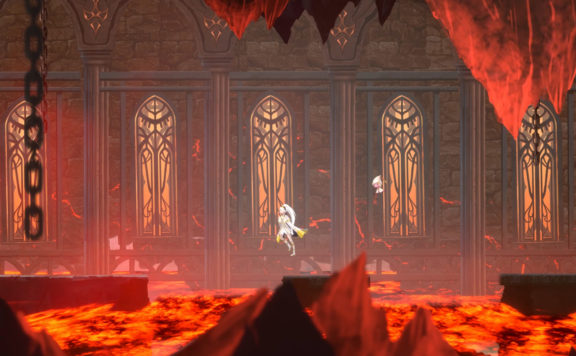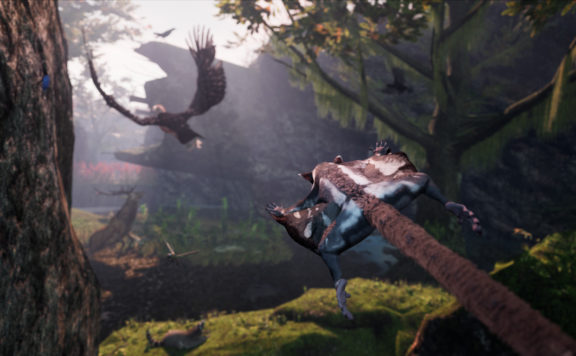Back in May 2012, a wonderful game arrived on PlayStation 3 and Xbox. The original Dragon’s Dogma, a very successful experiment by Campcom and also a game that was able to carve a place in my heart. In it, you were thrust into the role of Arisen in an action RPG with an open world.
Your Arisen was a simple resident of a small fishing village attacked by the Dragon. Seeing the strength of spirit and the will to fight, the Dragon takes the heart of the protagonist who not only does not die but also acquires certain mystical powers. One such power is the option to summon and command Pawns, mysterious heroes from other worlds. The Dragon, as well as various cultists and other bad guys, were trying to bring the End of the World. The plot colorfully and ornately showed the path of the Arisen, and how their decisions would affect the ending.
And now the series is about to receive a sequel, arriving on March 22nd. Dragon’s Dogma 2 will show a continuation of that plot and the story of the new Arisen, deprived of memory, sent to the mines, but never broken. The story will plunge players into the behind-the-scenes intrigues of the powers that be, the conspiracies, spy games, epic battles with monsters, and much more.
To be honest, having spent over 50 hours in the game at the moment of the writing, I have hardly completed a third of the plot and feel like I’ve barely scratched the surface, but the game has completely captivated me nonetheless.
The beginning of the game allows players to choose their Arisen, starting with appearance and various small character details, sizes of different body parts, hair color, and resulting in the choice of the basic Vocation: Archer, Fighter, Mage or Thief. This is where our new quest begins. As the protagonist toils at the mine, they will see a vision of a certain stranger that will implore them to run. As the work camp gets attacked by a Medsa, it gives your Arisen a chance to slip away.
As you play on, the game will present a very interesting, detailed plot that unfurls at an unhurried pace, allowing you to take pleasure in all the small worldbuilding details. I am not going to press into the story in much detail as it is something best experienced on your own. However, you are in for a lengthy epic journey, with your decisions dictating how much and what exactly you will be able to learn. As an example, in one distant village you will be able to come across an interesting conversation that will open a new quest, or maybe you will stumble on a situation that requires some good ol’ Thief touch.
The main point of the plot is that the Throne is taken over by a fake Arisen, who has enough power and money to keep the lofty position. It is up to you to overthrow him and take over! And, as you progress through the main plot, you will open up neighboring countries, areas closed to ordinary people, and some pretty amazing locations. You will also encounter new friends, spies, interesting guilds, and much more on this quest.

The developers describe the game in the following way: “Dragon’s Dogma 2 is a single player, narrative driven action-RPG that challenges the players to choose their own experience – from the appearance of their Arisen, their vocation, their party, how to approach different situations and more – in a truly immersive fantasy world.”
And those are not just empty words or PR-speak, Dragon’s Dogma 2 provides plenty of unusual sensations from interacting with the world. You get to explore at your own pace and fully immerse yourself in this world as you traverse through the forests and mountain ranges, across lakes and villages. Without depending on the whims of the plot, you could wander through the forest for a long time, only to hear a strange sound followed by a stumble upon a sleeping dragon. Of course, the sound of the protagonist’s steps would wake the monster up, and you will have a fight with a furious reptile on your hands.
Except… Nobody’s taught your Arisen how to fight dragons back at the mines. Or what to do when your path is crossed by a brutal Ogre, a vicious Minotaur or a wild griffin that really enjoys whisking away your Pawns.
The game features an impressive bestiary that depends on the area. In one part of the map, you will come across lizards that would attack you with spears. In mountainous areas, you will run across reptiles twisting into a wheel and ramming into you, and other regions yet will throw something completely different your way. You will come across ordinary Zombies, Liches, and fully geared Skeleton Warriors that utilize two-handed weapons and a full suit of armor. These guys ripped my team to smithereens a handful of times.
But, as you get battle experience and better gear, it becomes much more thrilling to kill all sorts of critters and explore every nook and cranny. Much less restricted by my equipment, I’ve started to greatly enjoy these battles, trudging through the game world at night and looking for stronger opponents to fight, often relying on hearing to find my way to the new enemy.

Let’s take a step back. The game offers four basic Vocations for picking:
- Fighter that can be either a tank or a well-balanced damage-dealer that can toss a fellow party member onto the back of an ogre or taunt and soak up some damage;
- Archer, the best candidate for dishing out damage from afar, luring enemies into tar and setting them on fire, as well as throwing in some bleeding, poison damage, and more;
- Thief, the most unique class when it comes to skills: starting with stealth that will allow you to sneak past enemies or get close for a quick silent kill, and going all the way to theft (come on, it’s in the name!) and other illegal activities and interesting deeds;
- Mage is the jack of all trades: can deal damage, buff and heal, add elemental damage to a party member’s weapon, deal a ton of damage both in single target and in AoE scenarios, and much more.
From that point on, the game will give you a chance to unlock other, advanced Vocations. Warrior requires two-handed weapons, Sorcerer needs a staff while something more exotic like the Mystic Spearhand will have you find someone of this Vocation and talk them into teaching you. Without using online guides, finding them is already difficult enough, let alone studying the gameplay and skillfully applying it to battles.
Let’s talk a bit about the gear. Every class has its own equipment, a Fighter will not be able to equip Warrior’s two-handed sword or a bow, Thief cannot whack enemies with a staff, a magic bow will not give any advantage to your usual Archer, and so forth.
Every character can equip the appropriate weapon as well as helmet, body armor, cape/cloak, two rings, and finally pants and boots (as a set). Each piece of gear can be further improved, with each element having several levels of upgrades as well as their own parameters. Regular protection, magical protection, elemental resistances, and so on. You spend resources, both the usual and the rare ones, when upgrading your equipment.
What’s nice is that when you purchase or view new equipment from the inventory, the items are automatically shown on your character whose look changes with them. So not only do you have to consider the items’ stats, but also feed your vain side! For example, drakes can set you on fire or hit you with magic, resulting in shock. Equipping armor with resists against fire and shock/lightning will reduce damage done and give you a chance to avoid status effects. But what would it matter if you didn’t look your best while doing it?
I can’t say that there are too many status effects in Dragon’s Dogma 2, but the ones that are present have an extensive role in gameplay. Poisoned, burning, oily, wet, dazed, sleepy, fainted, frozen, mute and petrified are the statuses that can be applied to your enemies… or to you.
Each debuff has its own effect: a frozen enemy moves slower, a doused enemy catches fire at a quicker rate, a poisoned opponent loses health, and so on. Every status effect has its own ways to cure it, which you can either buy or craft on your own.
The game offers a simple but effective crating system from resources purchased or collected in the world. Regular medicinal herbs, fruits, meat, fish, resin from the trees, ore, remains of animals and monsters, all of this and more will be stuffed into your bags during your adventures. And, of course, immediately used to craft and upgrade your equipment.
Herbs and fruits can be used to create healing potions, certain branches and flowers can be combined into explosive arrows, and so much more. The crafting system allows you to quickly create just what your Arisen needs. However, be prepared to spend quite a bit of time looking for rare ingredients, frequently wrestling them off of stronger exotic monsters. For example, the rare Bone of Dullahan, a high undead that you can spend an hour tracking among the marshes and cemeteries only during the in-game night.
However, you have to watch out for the weight of the reagents, armor elements, and ingredients. All characters, from your very own Arisen to the Pawns that follow you, have their own restrictions on how much they can carry, including the weight of their equipment. And the higher you go above that limit, the more penalties you will receive to the stamina regen and movement speed.
And the most interesting thing is that the limit of weight depends on your character’s build and complexion, the more muscular and taller the character, the greater the overall weight they can carry. Meanwhile, a short and slight character can carry no more than half of the taller one’s weight limit.
Fortunately, the Arisen and Pawns can increase that limit by using the golden beetles scattered around the world. You can find them hanging on trees, crawling on the ground or even being stuck in dungeons. It is more convenient to look for them at night since they emit a pleasant glow much like fireflies (even if they look like stag beetles).
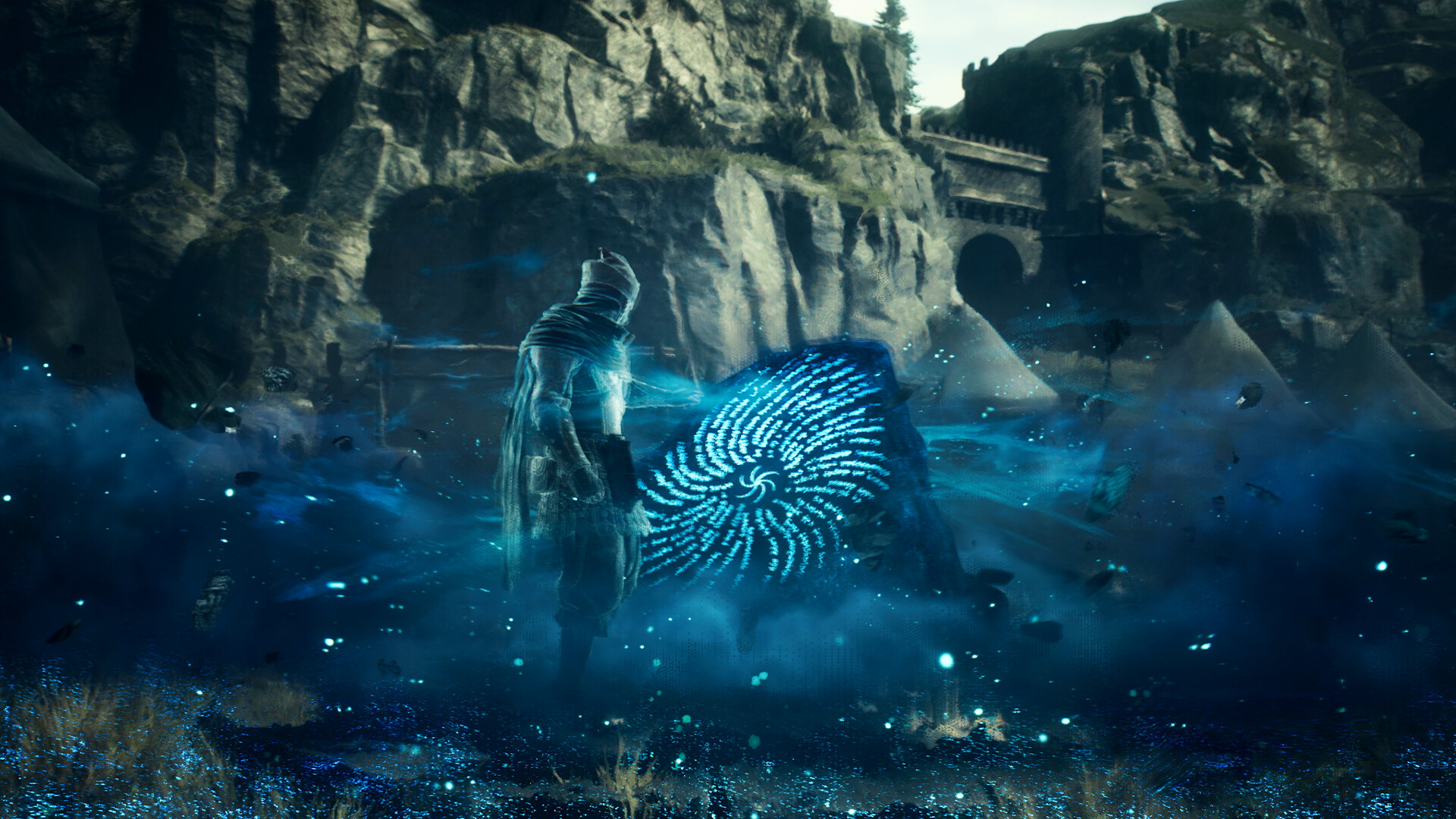
Let’s move onto the Pawn system.
Pawns are heroes summoned from the abyss, party members of other Arisen. Almost immediately at the beginning of the game, our Arisen “resurrects” their Pawn, the eternal party member that will always stay with you and help you out. And, while the Arisen is taking a break from all the world-saving, the Pawn will go through the abyss to join other heroes on their quests. As a bonus, while your Pawn helps out others, they will gain knowledge about treasure chests, treasures, points of interest and secrets found by those in the Pawn’s company.
It works the other way, too. The Pawns that you have hired will show and tell you about the quests they have completed with other Arisen, and they will also learn from you about secrets, treasures, or quest NPCs. Every Pawn has their own class, character, sex, unique appearance, and more. In addition to the Vocation, each Pawn has their own set of abilities and gear. You can choose a Pawn based on skills, for example, a Mage with healing abilities and elemental empowerment and a Thief with focus on single-target damage instead of stealth.
Pawns have their own gear but, as the game progresses, you can change their equipment. Just take a note that these items will remain in the Pawn’s inventory as they return to their own Arisen through the abyss. Sometimes it is quite nice to get a strong new enchanted sword on your Pawn with a “like” from someone that used them as well.
The Pawn system is a great addition to the game, your companions have good AI both in world exploration, and when it comes to combat. They promptly suggest points of interest, some hidden secrets, or even run on their own to get some resources. Pawns can acquire useful skills, for example showing resource nodes or points of interest on the map. These unlock as you travel together and complete various necessary tests like murdering 30 griffins or ogres together.

If a Pawn dies during battle or exploration, you can quickly raise them back up. However, if the moment is lost or you cannot reach the body of your Pawn – perhaps they were thrown off the cliff or into a river – then you can only get your companion back from the riftstone.
There is a nuance: if you have transferred things onto your Pawn and they have died and were not promptly resurrected… You can call them back from the riftstone, but they will lose the items. Yes, it’s a bit of a shame to lose three dozen ore nuggets when your Pawn randomly gets yeeted into a river by a flap of a dragon’s wing, but such is life.
Riftstones allow you to find Pawns that suit your playstyle: the class you want, the weapons you prefer, even the abilities that will carry you on the way to the target. Another convenient thing is the option to choose Pawns based on sex, character, and a number of important parameters. Pawns themselves even crack jokes about it, saying that there are Arisen who prefer only the company of women or a purely dude party.
Just like your Arisen, Pawns develop and live their own lives as you go through the game. On my journeys, I ran into an interesting Pawn named Bobo, a masterful Thief that immediately won me over with his appearance, extraordinary and comical as it was. Having recalled him a dozen hours later, I ran into him again when I was level 30+ and invited him to join my party again. His voice and jokes brightened my time in Dragon’s Dogma 2 during my night-time binging, with his humor and his skill with knives amazing me in equal measure.
The world of Dragon’s Dogma 2 is uniquely beautiful and filled with intricate details, remaining fresh and exciting even after 30+ hours of trekking across mountains and adventuring through the various caves, I have not grown tired of exploring. Your Arisen will come across ancient ruins, villages both inhabited and destroyed, forest thickets and caverns, caves and blocked tunnels. Everything in the game is done beautifully and with great detail, making sure that every part fits in the overall picture. In my opinion, the overall palette is a bit too gray-ish and lacks vibrancy, but the Photo mode offers several filters with flexible settings.
There are no out-of-the-box elements that ruin your immersion, every single bit of the various locations fits and is clear and detailed. The beautiful valleys, mountain ranges, streams and villages will allow you to enjoy exploration for a very, very long time. The locations themselves smoothly flow into each other, and even reaching the capital from a small border town can be achieved along a number of paths. And each one will give you a unique adventure. The developers have approached level design very competently, players will never spend a long time simply walking along, there will always be something to look at, interact with or fight against.
However, even an ordinary journey from city to city on foot will take an extremely long time. Simply legging it, without using the carts (the game’s take on the fast travel), can easily take up to 20 minutes of real time. And if you decide to explore while on the way, vacuuming up ingredients and diving head-first into encounters, that number can easily bloat to 2-3 hours. Meanwhile, the world around you continues to live and change, going through the day-night cycles. Sometimes it is worth it to return to an already explored location during a different time of day, you can run into something new that way.
You can never predict what happens when you are taking the next step. For example, after a couple of battles inside a cave you’ve stumbled upon, you can run into an Epic Monster. In my game, I ran into an Ogre shortly followed by the Minotaur just like that. And then, about 5 feet away from the Minotaur’s corpse and another 10 feet away from the campfire, I got picked on by a Griffin. And I just used up all my explosive arrows in the last battle…
And meeting a Dragon means spending almost all your arrows, a ton of medicine, a dozen of back-to-back Pawn resurrections, only to see it flying away with barely any health left. I spent almost half hour chasing after the wounded dragon to catch up and kill it, and I can’t even approximate how long the entire ordeal lasted starting with the cave. Nevertheless, it was a fascinating experience.

Monsters are also very beautiful and pleasant to look at. Ordinary goblins might not look too threatening and don’t have crazy damage numbers, but just you wait until you run into their more impressive brethren! Green goblins skillfully hide in forests and grass, remaining hard to notice as you trudge along minding your business. Only when one of these jumped onto my character’s face and stabbed them with a spear did I notice that I was surrounded by a small tribe of six.
Sure, you can spot them if you pay close attention to your surroundings. But just imagine a situation where you’ve run out of oil, you are stuck in a cave with poor lighting, and there are lizards on the walls that are just waiting for a moment to stab you in the back as you walk past.
Epic monsters and bosses look and feel incredibly impressive. When a Griffin falls upon you from the sky, whipping its huge wings and clicking the toothy beak, it hurts… but it’s also beautiful. Cyclops with a giant club, a Minotaur, monsters add to the world of the game as much as intricate locations do. The majestic Dragon skillfully casts spells during battle, from ordinary lightning to an epic attack with several meteors, while the shadow from its snapping wings adds to the imagery of a wrathful monster that is finishing off your party one by one.
And when you are riding a cart from the capital to one of the border outposts and get attacked by a Minotaur, enraged at its fur smoldering from an explosive arrow and ramming its horns to overturn the cart… The world comes alive in a completely new way. All of that is enhanced by beautiful music that does not distract from the main game, gently accompanying you on your journey through this fantasy world. The soft exploration tunes swap to a more energetic battle music, while encountering a boss starts an epic track you won’t miss for anything.
The world is painstakingly and lovingly created by the developers, maintaining a wonderful balance in any facet. I have not noticed a single detail that stood out from the general atmosphere, everything was nicely written and well-implemented, looking just right for a fantasy game.

Dragon’s Dogma 2 is a worthy successor to the phenomenal Dark Arisen. Capcom managed to improve the game on every front while preserving the spirit of a classic fantasy RPG adventure set in a living open world. Instead of forcing the player to endlessly farm resources and grind away at the map, the developers made the process of exploration engaging and almost addictive.
Dragon’s Dogma 2 will suck you in for dozens of hours filled with traversing gorgeous landscape, fighting impressive monsters and going through a deep narrative. If you are alright with the game taking over your every free waking moment for the foreseeable future… Then what are you waiting for, Arisen?
Dragon’s Dogma 2 arrives on March 22, 2024, on Xbox Series X|S, PlayStation 5, and PC via Steam. The game does not require the knowledge of the story or mechanics of its predecessor, Dragon’s Dogma: Dark Arisen, but the overall knowledge of the world might make this journey more immersive.



